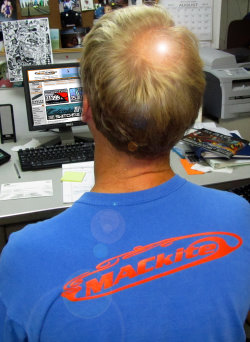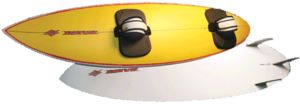Kiteboarding Gear
Kiteboarding Gear
What gear do I need to go kiteboarding?
- Kiteboarding Kite – Generally speaking, a kiteboard kite is a large kite with the ability to re-launch off the water and generate enough pull to plane you out on a board. Sizes vary from 4 meters to 19 meters. When looking for gear, make sure to buy a complete kite which will include the lines, bar, safety systems, pump and carrying bag. A knowledgeable kiteboarding shop will help you get the right sized kite for your weight and conditions. Kiteboarding Kites
- Kiteboard – Though similar in look to a wakeboard, a kiteboard is shaped much differently and uses foot straps instead of boots for most riders. MACkiteboarding highly recommends starting with a larger board when beginning the process of learning to kiteboard. Kiteboarding Boards
- Harness – The kitesurfing harness is often the most overlooked piece of equipment in a kiteboarding gear package. Remember that your harness is directly connected to your body. If it does not fit well, you will always know it. There are 2 basic types of harnesses – the seat harness and waist harness. Kiteboarding Harnesses
- Wetsuit/gloves/hood/booties (depending on air/water temps) – Almost anywhere that you kiteboard in the United States, you will need some type of cool weather and water protection. It may be as simple as a piece of poly propylene top, to a full blown dry suit with hood, gloves and wetsuit booties. The most important thing to keep in mind as you suit up for your kiteboarding session is the swim in from the cold water. If you kite in 80 degree water, there is not much to worry about, but if you kite in 50 degree water,
 even if the air temperature is 80 degrees you can have hypothermia in 15 minutes. Contact a serious kiteboard company for purchasing the right wetsuit and water gear for your needs. How to recognize and avoid hypothermia.
even if the air temperature is 80 degrees you can have hypothermia in 15 minutes. Contact a serious kiteboard company for purchasing the right wetsuit and water gear for your needs. How to recognize and avoid hypothermia. - Eye protection (optional) – If you ride often in strong sunlight good eye wear will save the day. Check out Seaspecs or Surf Shades for glasses that stay on your head. Our owner swears by his special prescription Seaspecs – he used to always ride "blind".
- Sunscreen (mandatory) – More is better. Don't wreck your session or vacation by forgetting sunscreen. Always keep a bottle in your car and lather up good. Old guys- don't miss the bald spot in the middle of the head.
- Travel Gear Bag – optional. – If you are looking at taking kiteboarding vacations, a Kiteboard Gear Bag will become a needed item.
Kite Types:
Kite technology has gone off the charts since Cabrinha Kites decided to completely get away from "C" shaped kites in 2006. When Cabrinha launched the first Crossbow in late 2006, the kiteboarding industry was built on serious adrenaline junkies and a small, but highly committed group of riders. Learning was a challenge and safety was always a major issue. After the success of the Crossbow and Switchblade kites, all the other major brands (North Kites, Liquid Force Kites, Slingshot Kites, Best Kiteboarding) jumped on the bandwagon and a fantastic wave of new kite shapes, bridles and safety systems exploded onto the market. Here is a list of the current different types and shapes. The great thing is that almost every kite today is much safer to use than just a short 5 years ago.
There are 2 Basic types of kites with many variations of both. The most common type is called a Leading Edge Inflatable kite (LEI), and the other type of is called an airfoil or ram air kite. The LEI kiteboarding kite has internal air filled bladders in the struts and leading edge to make the kite have a rigid skeleton and float on the water. LEI kites are currently the most popular kiteboarding kites in the world. They come in the following styles:
| Bow Kites – Bow kites are the kite that revolutionized kiteboarding and kite surfing. They have a bridle, offer the largest wind range and are the most efficient going upwind. Sometimes Bow Kites may be referred to as SLE (Supported Leading Edge) kites. The differences between the two has become very blurred. We will refer to them as bow kites. Some common bow kites are the Cabrinha Crossbow, Cabrinha Switchblade and Slingshot Rally. |  Cabrinha Crossbow |
| Hybrid Kites – Hybrid kites cover a very large variety of kites and can be referred to as Delta kites and SLE kites, as well as being known as Hybrids. Hybrids generally offer faster turning, rapid depower and a stable arc design. Popular Hybrids are the North Rebel, Cabrinha Convert and Vector, Naish Park, Liquid Force Envy and Havoc, and the Best Kahoona. Most kites today fall under this type of kite, but their performance and shape can vary considerably. |  Cabrinha Vector |
| C kites – The classic rip-you-off-the-water kite. C kites are generally used by pro riders and have very quick turning and loads of pop, but much smaller wind ranges and are harder to relaunch. Classic C kites are the Naish Torch, Slingshot Fuel and Liquid Force HiFi and Nirvana. We don't recommend C kites to new to intermediate riders since the amount of time and energy learning on a C is substantially higher than on a Bow or Hybrid kiteboarding kite. |  Liquid Force Nirvana |
LEI kites come in many shapes and sizes. The best kiteboarding gear decisions come from a staff of serious kiteboarders. Contact your local shop or call MACkiteboarding at 800-622-4655 to get the right answers to your questions.
Ram Air Kites have also become players in the kiteboarding gear game. Design improvements and some of the inherent advantages of no struts have brought Airfoil or Ram Air kites into more of the mainstream area of kiteboarding. We at MACkiteboarding are very impressed with the light wind performance, incredible durability and super easy setup and launch of the HQ Kites Matrixx foils.
Kite Sizes:
Kites are sized by the overall surface area of the kite when it's laid flat on the ground. Typical kiteboarding kites are 7-18 meters. Kites are sized by rider weight, wind speed, board size and type, and rider skills. The bigger the kite, the more power at a given wind speed. The bigger (heavier) the rider, the larger the kite needed.
The following tables are rough guides to kite size vs. wind speed for a 170lb person (larger people require more power = larger kite). As your skills increase, you will be able to control a larger kite in more winds.
Remember to understand where you will be riding to figure out the right size kite for you. Average wind speeds vary tremendously from kiteboarding site to kite surfing site. Talk to a local kiteboarder to get your best information. Many kitesurfing stores are familiar with many areas in the country and can help you choose the right size kite.
The size chart is based on riding high depower bow or hybrid kites with a twin tip kiteboard.
Beginner 170 lbs
| Kite Size | Wind Speed |
| 16m² | 10-18 mph |
| 12m² | 15-25 mph |
| 9m² | 22-30 mph |
Advanced/Expert Rider 170lbs
| Kite Size | Wind Speed |
| 16m² | 10-20 mph |
| 12m² | 14-28 mph |
| 9m² | 20-35 mph |
Board Types:
| Twin Tip Kiteboard: The most common type of kiteboard. The outline is completely symmetrical so that it can be ridden in either direction on a heel side or toe side edge. Great for beginners to pro freestyle kiteboarders. Smaller Twintip kiteboards are used for freestyle, while larger boards are used for light wind, new riders and larger riders. High depower kites allow you to ride a larger board than in the past. If you live in a light wind area, buy a bit larger board if you will only own one. |
 |
| Directional Surf Board: This type of board has a definite tip and tail (like a surf board). Unlike twin tips, you cannot ride this board in reverse. Mostly used for waves, strapless riding or light wind days. Kitesurfing is one of the fastest growing areas of kiteboarding. If you ride in areas where the waves are small, get a board with a bit less rocker to stay on top of the waves and keep going in the lighter winds. If you have big surf and big wind, a small kite with a standard surf board is an amazing combination. |
 |
| Race Boards: This is becoming a great new addition for kiteboarding. Race Boards have the maximum speed and best light wind performance of any type of kiteboard. |
 |
Board Sizes:
Board lengths are usually measured in centimeters (like a snowboard or skis). For example, a large beginning rider would typically learn on a 140-150cm board. You may see a second number also in centimeters; this is the board's width. Boards have become wider in the last 5 years. A board made in 2004 may have been 155x36. A similar light wind, big rider board built in 2011 would be 146x44. A 170lb advanced kiteboarder might ride a 132x40 (132cm long, 40cm wide) board. The larger the board, the less power needed to get onto a plane. The smaller the board, the more control you have at high speeds (opposite from skis and snowboards). Make sure to talk to your instructor during your lessons to decide which board will work best for you. A rock star wakeboarder can ride a smaller board much sooner than someone with no board skills.
Can I use my wakeboard?
It is not an easy way to learn because of the fin placement, board shape, and bindings. The shape of most wakeboards requires more power to get onto a plane, and trying to get your feet into bindings is nearly impossible during your early sessions. Advanced riders do use wakeboard bindings from time to time, but they have the skills needed to fly the kite and get into the binding at the same time.
Return to the Kiteboarding Knowledge Center
